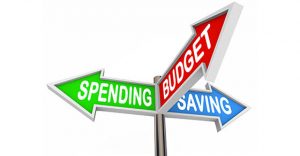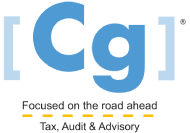What drives the success of real estate investing? A solid strategy. A real estate investment strategy is not just a list of properties to buy; it’s about making informed decisions backed by key financial metrics. Understanding the variables at hand is essential in order to make profitable moves in the world of real estate.

These metrics, including cash flow, gross rent multiplier, and others, offer a window into the potential profitability and risks of an investment. At Cg, our real estate accounting specialists are here to help you make informed decisions in the ever-evolving landscape of real estate investment – contact us today to learn more about our services or read further on the most important financial metrics in real estate investing.
Net Operating Income (NOI)
Net operating income indicates how much money a real estate property is making. You can calculate your net operating income by adding up all the property’s revenue, like rent and additional income from amenities such as parking and laundry, and subtracting operating expenses, such as maintenance, utilities, and property management costs. Knowing the base quantity of how much income the property brings in is an important basis for other calculations.
Cash Flow
Cash flow is the money remaining each month after covering property-related expenses like mortgages, taxes, and maintenance. A positive cash flow signifies your investment is making profit, enabling you to reinvest, save, or enjoy a steady income. On the flip side, a negative cash flow can be a red flag, signaling a need to reevaluate expenses or rent to ensure your real estate investment stays profitable.
Capitalization Rate (Cap Rate)
If you are familiar with stocks, you can think of the capitalization rate (abbreviated as cap rate) as the equivalent of a stock’s dividend yield. It indicates the annual return on investment you can expect from a property, expressed as a percentage. To calculate this measure, divide the property’s net operating income (rent minus expenses) by its current market value or purchase price. A higher cap rate generally indicates a potentially better investment opportunity, but it’s essential to consider other factors like location and market conditions.
Gross Rent Multiplier (GRM)
The gross rent multiplier (GRM) is a handy metric that can help you estimate how long it would take to recoup your investment through rental income. Calculate your GRM by dividing the property’s price by its annual rental income. For instance, if a property costs $300,000 and generates $30,000 in rent annually, the GRM would be 10. Because a high GRM might indicate a riskier or less profitable investment, you should look out for a lower GRM while investing in real estate.
Return on Investment (ROI)
Return on investment (ROI) is the profit you make from your property investments. For instance, if you buy a property for $200,000 and it generates $20,000 in rental income annually after expenses, your ROI would be 10% ($20,000 divided by $200,000), showing you’re earning 10% of your initial investment back each year. A higher ROI is better, as it means your investment is more profitable; a recipe for long-term financial growth.
Debt Service Coverage Ratio (DSCR)
The Debt Service Coverage Ratio (DSCR) is a vital metric that measures a property’s ability to produce enough income to cover its mortgage payments and related expenses. Lenders often require a DSCR of 1.25 or higher to approve loans. In that regard, a DSCR above 1.0 indicates that the property generates more income than needed for debt payments.
Whether you’re a seasoned real estate investor or curious about purchasing investment properties for the first time, understanding these metrics is crucial for tangible financial growth. For personalized real estate accounting guidance, contact the team at Cg Tax, Audit & Advisory or visit our real estate accounting page to gain more insight on profitable real estate investments.

